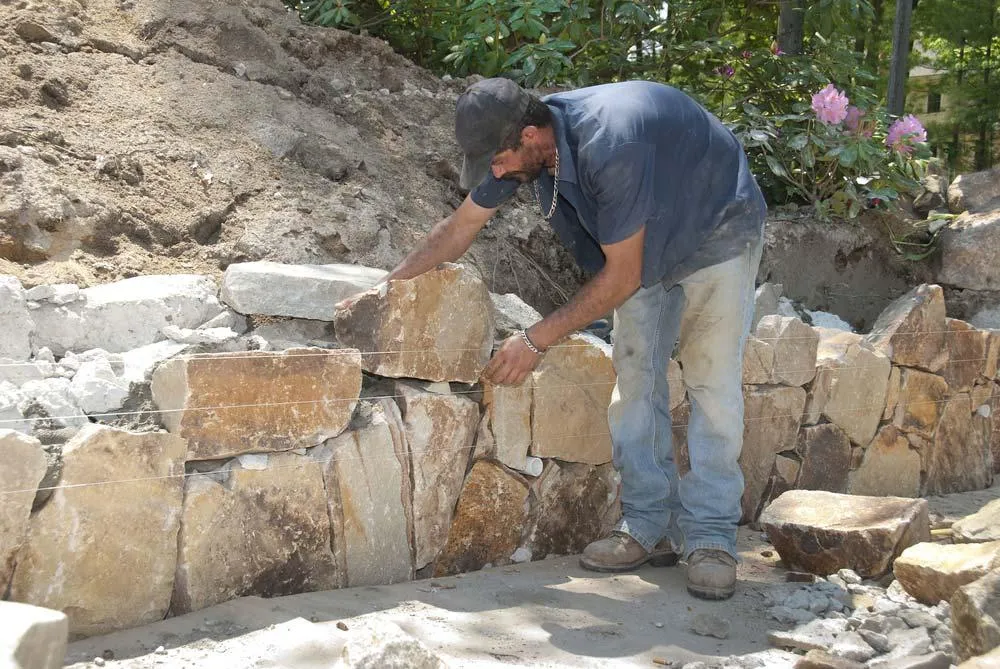
How Retaining Walls Can Prevent Erosion in Hilly Utah County Properties
If you own property in Utah County, you know that the beauty of its rolling hills and mountain views comes with challenges. Homes in Mapleton, Spanish Fork, and surrounding areas often sit on sloped terrain where soil erosion can quickly become a problem. Heavy spring runoff, sudden rainstorms, and Utah’s freeze-thaw cycles can wash away topsoil, damage landscaping, and even threaten a home’s foundation.
Retaining walls are one of the most effective and attractive solutions for controlling erosion. In this article, we’ll explore how retaining walls work, why they’re essential in hilly properties, and what Utah homeowners should consider when planning one.
Why Erosion Is a Problem in Utah County
Erosion is more than just an inconvenience—it can cause serious property damage if left unmanaged.
Loss of Usable Yard Space: Slopes can slowly wash downhill, leaving less flat space for lawns, patios, or gardens.
Soil Runoff: Unstable ground can send mud and debris into streets, storm drains, or neighboring yards.
Foundation Damage: When erosion occurs near homes, it can shift soil beneath driveways, patios, and even house foundations.
Landscape Instability: Trees and plants lose vital soil support, causing them to topple or fail to thrive.
Given Utah’s combination of snowmelt, rain, and dry spells, erosion management is not just cosmetic—it’s a necessity.
How Retaining Walls Prevent Erosion
Retaining walls are engineered structures designed to hold back soil, redistribute water flow, and create level surfaces in sloped yards.
Here’s how they protect your property:
Soil Stabilization: Retaining walls anchor loose soil, preventing it from sliding downhill during storms or runoff.
Water Management: Many retaining walls include built-in drainage to redirect water safely away from vulnerable areas.
Terracing: By breaking up a slope into smaller, flat sections, retaining walls create usable yard space for patios, lawns, or gardens.
Aesthetic Integration: With stone, block, or concrete options, retaining walls add both beauty and structural support.
Designing the Right Retaining Wall for Utah Properties
When planning a retaining wall in Mapleton, Spanish Fork, or other Utah County communities, homeowners should consider several key factors:
Assess the Slope
Steeper grades require stronger walls with deeper footings and reinforced design.
Gentle slopes may only need shorter walls for soil stabilization.
Choose the Right Material
Concrete Block: Durable, cost-effective, and versatile in style.
Natural Stone: Offers a rustic, timeless look that blends into Utah’s mountain scenery.
Poured Concrete: Extremely strong, ideal for large-scale walls.
Timber: Works for small garden walls, but less durable in Utah’s climate.
Incorporate Proper Drainage
Without drainage, water pressure builds behind walls, leading to cracks or collapse.
Perforated pipes, gravel backfill, and weep holes keep water moving.
Work with Professionals
Retaining walls over 4 feet tall typically require engineering and permitting.
Professional landscapers understand Utah’s soils and climate challenges, ensuring walls last decades.
FAQs
Do retaining walls really stop erosion?
Yes, retaining walls stabilize soil, prevent downhill movement, and manage water runoff effectively.How tall should a retaining wall be for a sloped Utah yard?
It depends on the slope and soil type. Smaller slopes may only need 2–3 feet, while steep properties could require walls over 6 feet.What is the best material for retaining walls in Utah County?
Concrete block and natural stone are the most durable for Utah’s freeze-thaw cycles and variable weather.Do I need a permit to build a retaining wall in Utah County?
Walls over 4 feet tall generally require engineering and city approval. Smaller decorative walls often do not.How long does a retaining wall last?
With proper installation and drainage, retaining walls can last 30–50 years or more.
Conclusion
In hilly Utah County communities, erosion is a challenge every homeowner should take seriously. Retaining walls provide both a practical and visually appealing solution, turning steep, unstable ground into secure, usable space. From protecting your foundation to enhancing curb appeal, these walls are an investment in both safety and property value.
By choosing the right design, materials, and professional team, homeowners in Mapleton, Spanish Fork, and beyond can enjoy outdoor spaces that stand strong against Utah’s unpredictable climate.